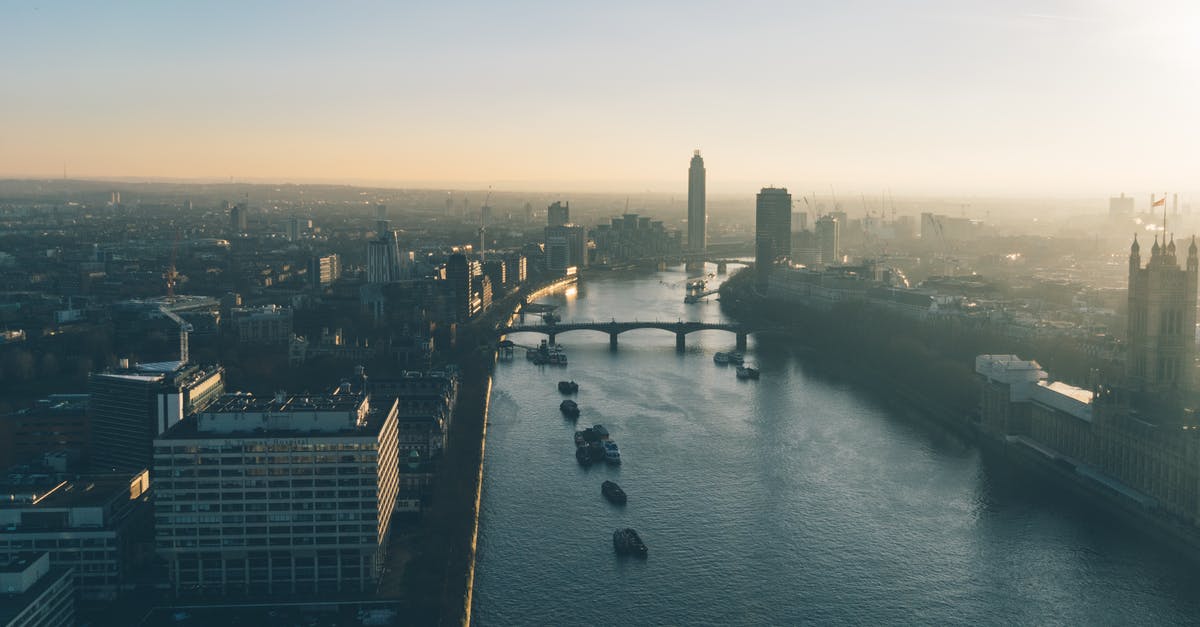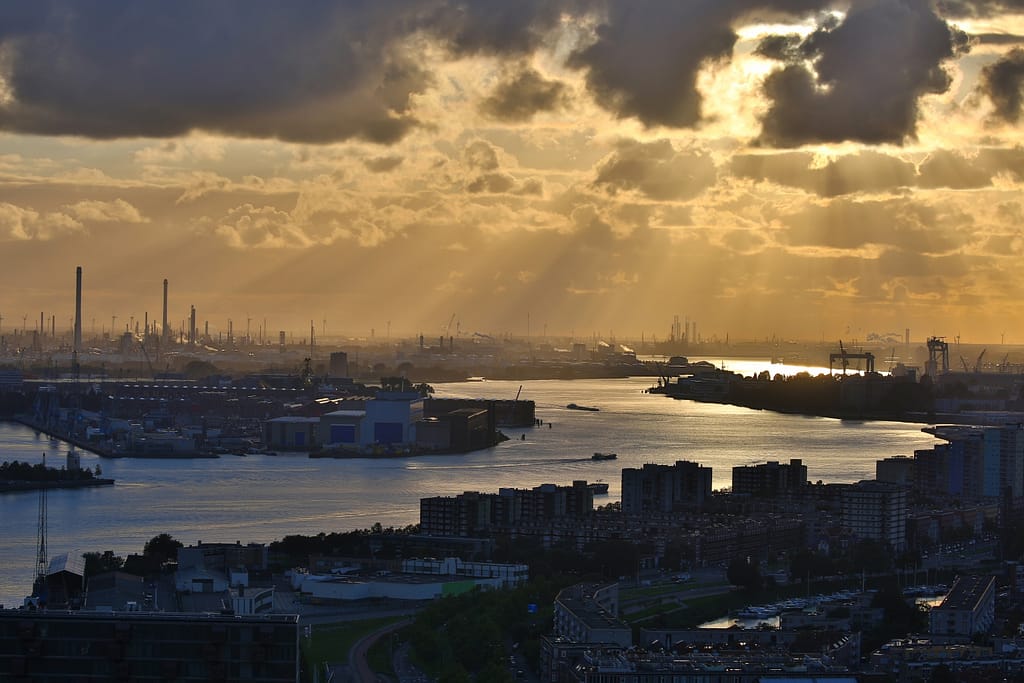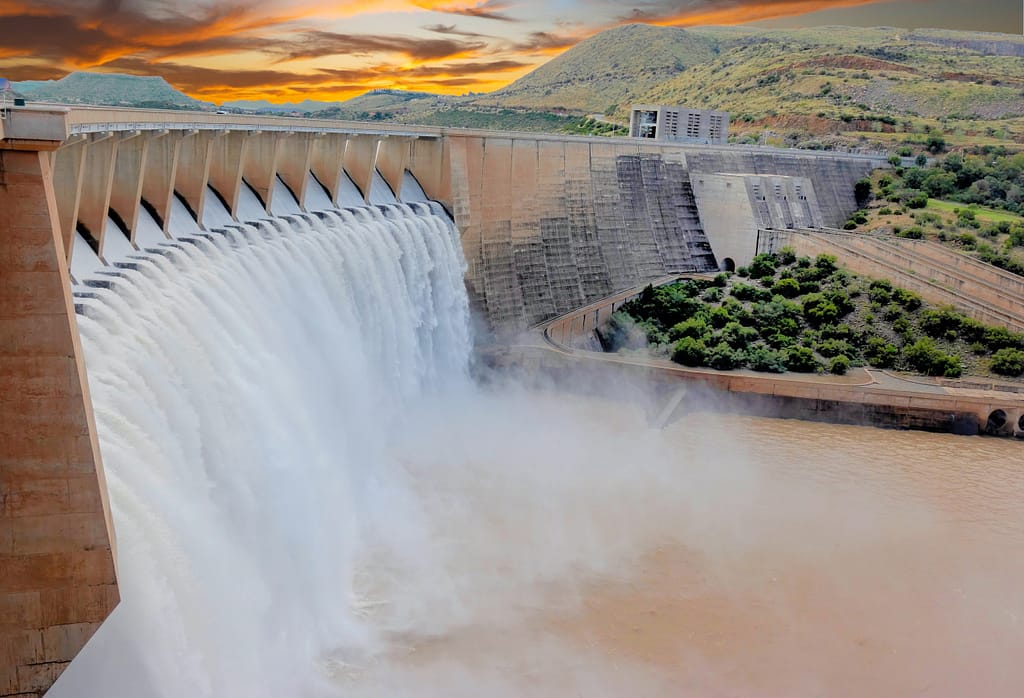Some of the world’s most prolific cities rely on nearby rivers to sustain them, but each city’s demands can have unforeseen consequences for the river basin as a whole.
Rivers and waterways have long been important to the historical development of human settlements; water provides the basis to sustain life and agriculture, with riverbanks and deltas having naturally fertile and arable land. Waterways have provided natural defense mechanisms and served as inland trade routes and the basis for urban economic development, especially in Asian and European cities.
Along the Yangtze river in China, cities such as Nanjing, Wuxi and Suzhou were established as political outposts that used the river as a source of irrigation for agriculture, and as a supply of goods and soldiers. While in Europe, global mercantilist trade around the 11th and 12th centuries solidified the positions of European river-front cities such as London, Hamburg, and Bruges.

Cities remain reliant on rivers
Although most cities have shifted away from using rivers as their primary modes of transport and sustenance, many have kept their riverbank locations. By way of the river, cities have remained connected to their peri-urban and rural land-use neighbours. Industry and agriculture use the river to sustain their activity, and these uses can be interrelated. For instance, dams are often built to create water reserves for cities and to produce hydroelectric power, while power stations and industrial sites use rivers to cool their equipment, and agriculture uses this water for irrigation. Some cities also use this water for drinking, and treated urban waste-water is fed back into the river. All of these uses affect the nutrient levels, temperature, flows of sediments, and biodiversity throughout the river. And this is the problem: each entity uses this resource for its own needs, while the river basin operates as a whole.

Adverse effects on the river basin, up- and down-stream
A river basin is an area of land drained by a river and its tributaries, separated from the next basin by a high point, and eventually flowing towards the sea, with the river as the focal point. These hydrological ‘zones’ cover almost half the planet: while cities occupy around 3% of the earth’s surface, river basins occupy around 45.3%.
When we look at the river basin as a whole, the adverse effects of individual urban interventions become clearer. These effects tend to be especially calamitous for settlements and ecosystems located downstream.
- Dams: While dams may provide power and flood prevention for cities, they also disrupt the ground and land-use around them, leading to unstable conditions. The world’s largest dam, the Three Gorges Dam along the Yangtze river in China, has provided flood protection and 22 500 MW in power potential, but has also significantly increased the risk of landslides and made the surrounding land unstable, with hundreds of surrounding river banks collapsing as a result.
Dams prevent the passage of migratory fish from one end of the river to the other (even those with fish passages prevent this natural migration pattern). The extinction of salmon in the Rhine river happened gradually as industrial activity, starting in the 19th century, polluted the water, and dams blocked the migratory passage of salmon. By the end of the 1950s, salmon became extinct in the Rhine. Dams also prevent the flow of sediment and silt flowing downstream, leading to erosion of land at the mouth of the river in delta regions and creating significant risks to settlements in those areas. For instance, since the construction of the Aswan Dam in the 1960s, the Nile River delta has shrunk, while the Mediterranean sea has eroded the delta faster than sediments from the river have been able to fortify it.

- Concrete: Modern cities are made up of a lot of concrete. Unlike the river basin’s natural marshlands and grassy soils, concrete is impermeable to water and rain. More impermeable surfaces lead to more runoff water from rainfall, creating higher water peaks in the river. Additionally, flood risk and damage to cities are heightened, because where natural river banks can absorb the water, impermeable city surfaces cannot. The more cities expand, the worse this problem becomes. For instance, a study of the 2018 Hurricane Harvey in Houston showed that the storm’s effects were worsened by the urban landscape and that in a cropland setting, rainfall would have led to almost two feet less flooding in some areas.
- Waste-water/agricultural run-off: Many cities draw water from rivers for drinking, and return to the river treated sewage water often rich in nutrients. This nutrient-rich water increases the bloom of green and blue algae, creating eutrophication which is detrimental to the river’s native flora and fauna. Agricultural activity also has adverse effects, by spilling fertilizer nutrients from runoff water into the river. This too causes eutrophication and power plant activity that leads to river warming, harming native species and creating increasingly volatile water levels.
Solutions lie in an eco-centric and systems thinking approach to the river basin
Fortunately, alternatives to these damaging and often mutually reinforcing effects on river basins exist — but they require us to think holistically about the entire river basin and how we co-exist with natural systems.
Systems thinking asks us to take a wide view: rather than trying to understand the world by reducing it to its individual elements and looking at them in isolation, systems thinking focuses on the relationships between elements and how these result in emergent outcomes over time.
Using this wider view, we can identify leverage points: places in a system where one small change can create big effects across the entire system. Using some essential principles of systems thinking, the remainder of this article illustrates how this perspective has been successful in implementing more sustainable and holistic solutions to river basin interventions.

Everything is connected
It is possible to build urban infrastructure that takes the entirety of the river basin into account, and has positive ripple effects throughout the system. Some cities and settlements have created flood defenses by ‘re-naturalizing’ river banks rather than blocking natural water flow such as building dams. This allows water to flood the river banks ‘naturally’ and cities can anticipate and plan around these flood-plains accordingly.
The Dutch program ‘Ruimte voor de rivier’ (‘Room for the river’) has instituted such projects throughout the country. Notably, in the city of Nijmegen, the ‘Ruimte voor de Waal’ initiative has successfully created flood resilience for the city using the re-naturalization approach. The project has allowed the water from the Waal River to flow back naturally by removing a dike upstream, which intentionally flooded part of the city. While a large swath of a village north of the city needed to be moved from their homes to accommodate this re-naturalization, the city of Nijmegen has built safer infrastructure, parks, and housing that can withstand flooding. The city also included a naturalised park that all residents (human and otherwise) can enjoy.

Focus on the root cause
Targeted interventions can be helpful in creating a safer and better natural river cohabitation for cities. But such interventions ask us to understand what causes a system to act the way that it does. In the case of cities, we may ask: ‘why has more urbanization made us more susceptible to floods?’ In this case, concrete and hardened surfaces in cities have worsened flood risks, especially for urban areas located close to water. The sponge city principle implements more porous sidewalks and replaces as much ground concrete for green space in order to make city ground more porous to rain and therefore more flood proof. This idea has been successfully rolled out in several Chinese cities and presents opportunities for city resiliency.
Finally, two other essential elements of systems thinking are: beware of unintended consequences and acknowledge trade-offs. These are important to keep in mind in all river basin interventions. All actions, even if environmentally beneficial for the surrounding regions, must take into account their effects on all activities across the river basin, especially those downstream. Without this, we risk creating a new set of systemic challenges across river basins.
Using systems thinking to understand how cities interact within river basins can help transform interventions from singular, symptom-minded solutions to holistic-minded cohabitation. Thinking about the effects of an intervention on the entirety of the river basin allows us to create longer-lasting and effective solutions at key leverage points which prevent further problems later in time. While holistic basin-minded interventions are few, their effectiveness in creating safe and high-quality urban spaces only provide shining examples of how to develop urban areas in symbiosis with the river basins that support them.




